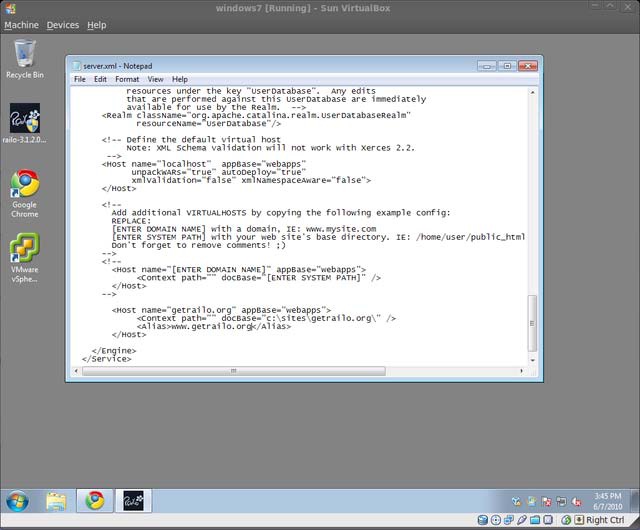To add a Railo-enabled site to IIS7, just carry out the following steps:
1. Create your site in IIS. This part is no different than what you would normally do to create a site in IIS.
2. In the IIS site that you want to connect, create a virtual directory in your new site named
jakartaand point it to your connector directory, which is usually atc:\railo\connector.
3. Next, go to your Start menu. Click on the Railo folder, and then click on the Tomcat Host Config link. This will open the Tomcat's
server.xmlfile in Notepad, so you can edit it.
4. Notice the comments in the
server.xmlfile. Add an additional Host entry to the file that states your domain name and where your files are located for that domain.
5. Now that you've set up IIS and configured your new host in Tomcat, you need to restart Tomcat for your changes to take effect. You can do this using the Tomcat Service Control option in the Railo Start menu folder.



